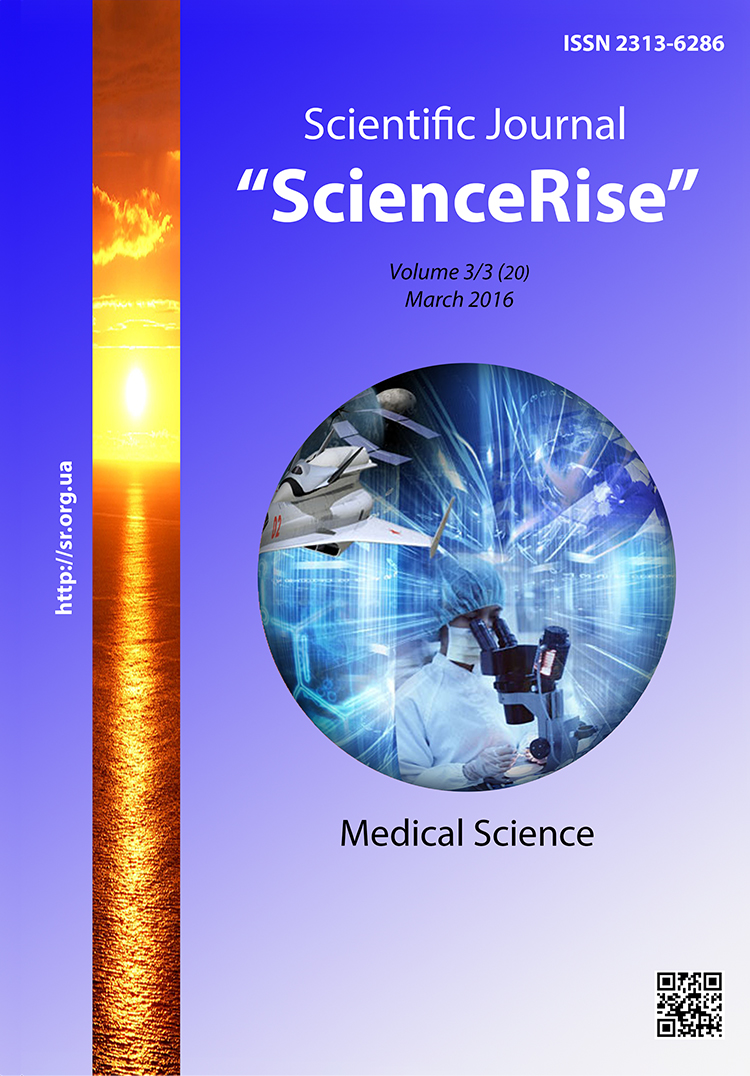Клинический анализ летальных исходов при гриппе, в том числе А(H1N1)pdm09, в пандемический и послепандемический периоды (2009–2016 гг.)
DOI:
https://doi.org/10.15587/2313-8416.2016.65103Słowa kluczowe:
Грипп А(H1N1), острый респираторный дистресс-синдром, летальный исход, клинический анализAbstrakt
В статье представлен клинический анализ 56 летальных случаев при гриппе А (H1N1)pdm, результаты прижизненного и постмортального вирусологического исследования методом ПЦР, результаты бактериологического исследования мокроты и ткани легкого. Дана характеристика осложнений, наиболее часто встречающихся факторов риска
Bibliografia
Palese, P., Kingsbury, D. W. (Eds.) (1983). Genetic of Influenza Viruses. New York. doi: 10.1007/978-3-7091-8706-7
Taubenberger, J. K., Morens, D. M. (2013). Influenza Viruses: Breaking All the Rules. mBio, 4 (4), e00365–13–e00365–13. doi: 10.1128/mbio.00365-13
Altmann, M., Fiebig, L., Buda, S., von Kries, R., Dehnert, M., Haas, W. (2012). Unchanged Severity of Influenza A(H1N1)pdm09 Infection in Children during First Postpandemic Season. Emerging Infectious Diseases, 18 (11). doi: 10.3201/eid1811.120719
Gradil, G. I., Gubinа-Vakulik, G. I., Tereshin, V. A. et. al (2015). Clinical analysis of lethal cases of the flu A (H1N1) pdm, complicated by pneumonia caused by Klebsiella pneumoniae in the post-pandemic period, against the background of extracorporeal membrane oxygenation. International Journal of Medicine, 21 (4), 72–77.
Gill, J. R., Sheng, Z.-M., Ely, S. F. et. al (2010). Pulmonary Pathologic Findings of Fatal 2009 Pandemic Influenza A/H1N1 Viral Infections. Arch. Pathol. Lab. Med., 134 (2), 235.
Morens, D. M., Taubenberger, J. K., Fauci, A. S. (2008). Predominant Role of Bacterial Pneumonia as a Cause of Death in Pandemic Influenza: Implications for Pandemic Influenza Preparedness. The Journal of Infectious Diseases, 198 (7), 962–970. doi: 10.1086/591708
Cheng, V. C. C., To, K. K. W., Tse, H., Hung, I. F. N., Yuen, K.-Y. (2012). Two Years after Pandemic Influenza A/2009/H1N1: What Have We Learned? Clinical Microbiology Reviews, 25 (2), 223–263. doi: 10.1128/cmr.05012-11
Skalova, H., Povysil, C., Hofmanova, J., Goldova, B., Jaksa, R., Jandova, K., Galko, J. (2012). Histopathological autoptic findings in 8 patients with pandemic influenza A (H1N1) pneumonia. Cesk Patol., 48 (3), 161–164.
Nakajima, N., Sato, Y., Katano, H., Hasegawa, H., Kumasaka, T., Hata, S. et. al (2011). Histopathological and immunohistochemical findings of 20 autopsy cases with 2009 H1N1 virus infection. Modern Pathology, 25 (1), 1–13. doi: 10.1038/modpathol.2011.125
Chernjev, A. L., Zayratyants, O. V., Polyanko, N. I. et. al (2010). Pathological anatomy of influenza A /H1N1/. Arch. pathol., 72 (3), 3–6.
Morens, D. M., Taubenberger, J. K., Fauci, A. S. (2008). Predominant Role of Bacterial Pneumonia as a Cause of Death in Pandemic Influenza: Implications for Pandemic Influenza Preparedness. The Journal of Infectious Diseases, 198 (7), 962–970. doi: 10.1086/591708
Sarmiento, X., Guardiola, J. J., Almirall, J., Mesalles, E., Mate, J. L., Soler, M., Klamburg, J. (2011). Discrepancy between clinical criteria for diagnosing acute respiratory distress syndrome secondary to community acquired pneumonia with autopsy findings of diffuse alveolar damage. Respiratory Medicine, 105 (8), 1170–1175. doi: 10.1016/j.rmed.2011.04.001
Shieh, W.-J., Blau, D. M., Denison, A. M., DeLeon-Carnes, M., Adem, P., Bhatnagar, J. et. al (2010). 2009 Pandemic Influenza A (H1N1). The American Journal of Pathology, 177 (1), 166–175. doi: 10.2353/ajpath.2010.100115
Lee, E. H., Wu, C., Lee, E. U., Stoute, A., Hanson, H., Cook, H. A. et. al (2010). Fatalities Associated with the 2009 H1N1 Influenza A Virus in New York City. Clinical Infectious Diseases, 50 (11), 1498–1504. doi: 10.1086/652446
Centers for Disease Control and Prevention. CDC estimates of 2009 H1N1 influenza cases, hospitalizations and deaths in the United States, April 2009-March 13, 2010 (2010). Centers for Disease Control and Prevention. Available at: http://www.cdc.gov/h1n1flu/estimates/April_March_13.htm
Harper, S. A., Bradley, J. S., Englund, J. A., File, T. M., Gravenstein, S., Hayden, F. G. et. al (2009). Seasonal Influenza in Adults and Children—Diagnosis, Treatment, Chemoprophylaxis, and Institutional Outbreak Management: Clinical Practice Guidelines of the Infectious Diseases Society of America. Clinical Infectious Diseases, 48 (8), 1003–1032. doi: 10.1086/598513
Acute Respiratory Distress Syndrome (2012). JAMA, 307 (23). doi: 10.1001/jama.2012.5669
Bernard, G. R., Artigas, A., Brigham, K. L., Carlet, J., Falke, K., Hudson, L. et. al (1994). The American-European Consensus Conference on ARDS. Definitions, mechanisms, relevant outcomes, and clinical trial coordination. American Journal of Respiratory and Critical Care Medicine, 149 (3), 818–824. doi: 10.1164/ajrccm.149.3.7509706
Jaber, S., Conseil, M., Coisel, Y., Jung, B., Chanques, G. (2010). Grippe A (H1N1) et SDRA: caractéristiques des patients admis en réanimation et prise en charge. Revue de la littérature. Annales Françaises d’Anesthésie et de Réanimation, 29 (2), 117–125. doi: 10.1016/j.annfar.2009.12.026
Standiford, T. J., Ward, P. A. (2016). Therapeutic targeting of acute lung injury and acute respiratory distress syndrome. Translational Research, 167 (1), 183–191. doi: 10.1016/j.trsl.2015.04.015
##submission.downloads##
Opublikowane
Numer
Dział
Licencja
Copyright (c) 2016 Григорий Иванович Градиль

Utwór dostępny jest na licencji Creative Commons Uznanie autorstwa 4.0 Międzynarodowe.
Our journal abides by the Creative Commons CC BY copyright rights and permissions for open access journals.
Authors, who are published in this journal, agree to the following conditions:
1. The authors reserve the right to authorship of the work and pass the first publication right of this work to the journal under the terms of a Creative Commons CC BY, which allows others to freely distribute the published research with the obligatory reference to the authors of the original work and the first publication of the work in this journal.
2. The authors have the right to conclude separate supplement agreements that relate to non-exclusive work distribution in the form in which it has been published by the journal (for example, to upload the work to the online storage of the journal or publish it as part of a monograph), provided that the reference to the first publication of the work in this journal is included.

